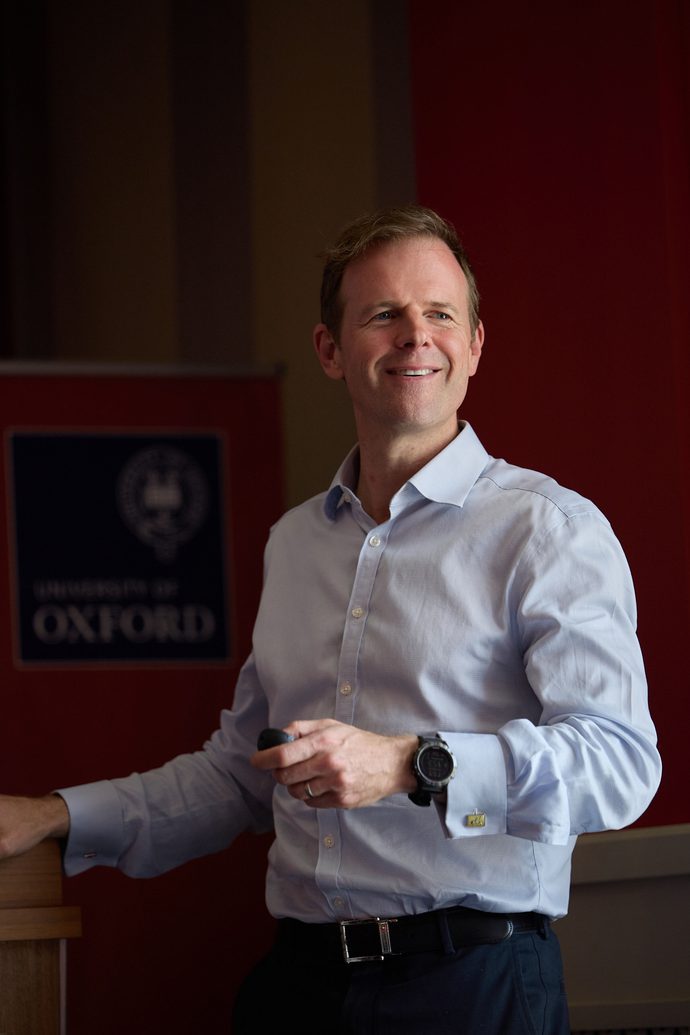- New guide to modelling the net zero transition is published;
- Paper considers questions from climate and finance ministries;
- Right models vital in the face of 'complexity and uncertainty' of the transition.
A new guide for climate and finance ministries on the most effective ways to model the Net-Zero Transition has been published in the Oxford Review of Economic Policy.
The paper, written by a team led by Professor Cameron Hepburn and including Lord Nicholas Stern, Nobel prize winner Joseph Stiglitz, along with Directors and Associates at the Institute for New Economic Thinking at the Oxford Martin School (INET Oxford), gives clarity to a plethora of available modelling options becoming increasingly relevant as computing power improves.
As countries accelerate their shifts toward net-zero economies, the paper responds directly to questions raised by the Coalition of Finance Ministers for Climate Action. It outlines the most relevant modelling tools available to address a growing list of pressing policy questions, including:
- How ambitious should carbon pricing policies be, and how should they evolve over time?
- What are the impacts of the carbon border adjustment mechanism or other global regulations on the economy and trade balance?
- What are the key trends around key technologies and how can those be leveraged to boost growth in key sectors?
- What is the impact of climate change and mitigation on household incomes?
- What is the impact of ambitious climate policies on tax revenues?
Challenges of modelling the transition
The paper highlights three fundamental challenges that make the net-zero transition hard to model – and even harder to govern:
- Structural Breaks. The shift to a net-zero economy isn’t about adjusting things at the edges: it requires fundamental, system-wide changes across several sectors including energy, transport, agriculture and heavy industry. These are deep shifts that disrupt the status quo. After a structural break, the future looks very different from the past, and old models and assumptions may no longer apply.
- Strategic complementarities. Some technologies become more valuable when introduced alongside others. For example, electric vehicles work best when there’s widespread access to renewable electricity and charging stations. With the right policies to coordinate these rollouts, the benefits multiply, making the whole greater than the sum of its parts.
- Non-linear dynamics. Decarbonising the global economy isn’t a linear process. It involves tipping points, technology cost thresholds, investment frictions and feedback loops that can accelerate change, or hold it back. This means that even modest policies, if well timed and well placed, can spark big shifts in behaviour, technology uptake or investment flows.
Economic models ‘part of the brain of government’
Lead author and Co-Director of the Economics of Sustainability (EoS) Programme at INET Oxford Professor Cameron Hepburn said that the paper digs inside the economic models and sets out what is going on and how we can fix it.
"Economic models used by finance ministries are effectively part of the brain of government, informing how officials understand the economic and financial systems. What does this "brain" say about climate change? All too often, like a poorly-trained AI, it comes out with quite hallucinatory conclusions that are contrary to reams of scientific and economic evidence. How does this happen? Digging inside the models is sometimes shocking, sometimes hilarious, but ultimately often frightening. This paper sets out what is going on, and how we can fix it." he said.
A practical guide through the modelling maze
While there is no single model that can answer all the questions posed by the net-zero transition, embracing a pluralistic approach can easily become overwhelming. With a growing array of modelling tools, each with different assumptions, strengths, and limitations, policymakers risk getting lost in a maze of models.
"Choosing the right model for the policy question at hand is crucial but surprisingly tricky and fraught with trade-offs", author Dr Pete Barbrook-Johnson said.
The paper offers a practical guide to help decision-makers cut through the complexity. Rather than prescribing one dominant framework, it provides a structured approach to matching policy questions with the most relevant modelling tools, ensuring that economic analysis remains grounded, purposeful, and fit for the real-world challenges of climate policy.
“This is about making sure that models serve real-world decision making, and not the other way around”, author Dr Penny Mealy said. “The goal is to equip policymakers with a flexible toolkit, and the practical insights to apply it effectively in different policy contexts”.
Key Links
Additional info
Overall, this paper considers nine modelling approaches, including:
- 'Policy-optimisation' integrated assessment models (IAMs)
- 'Policy-evaluation' integrated assessment models (IAMs)
- Energy system models
- Computable General Equilibrium (CGE) models
- Dynamic stochastic general equilibrium (DSGE) models
- Sector-specific models
- Agent-based models
- System dynamics models









